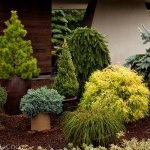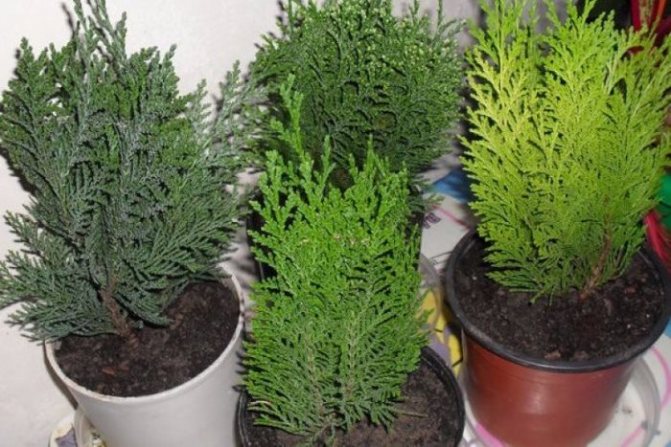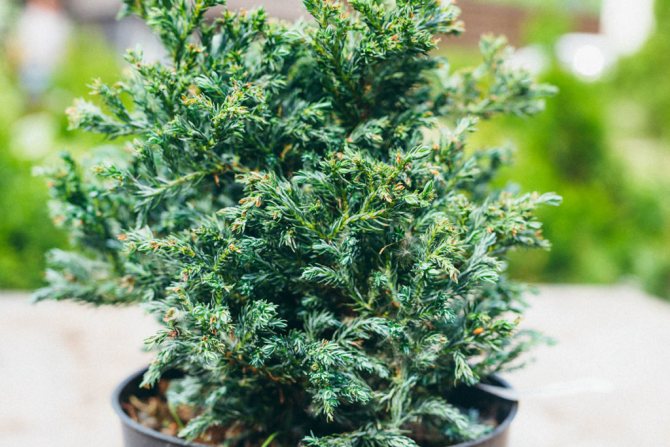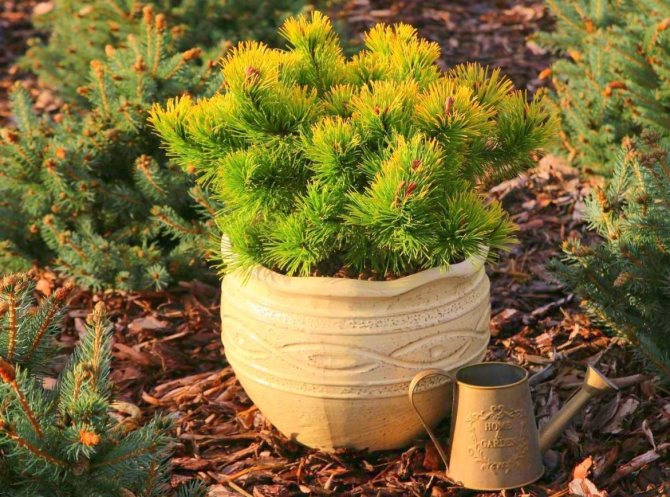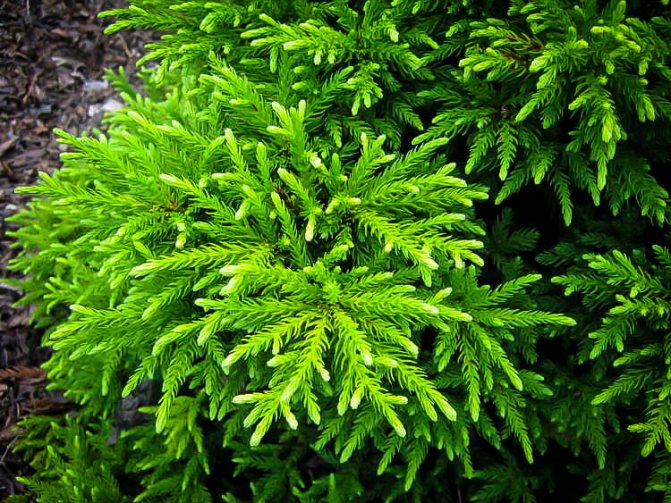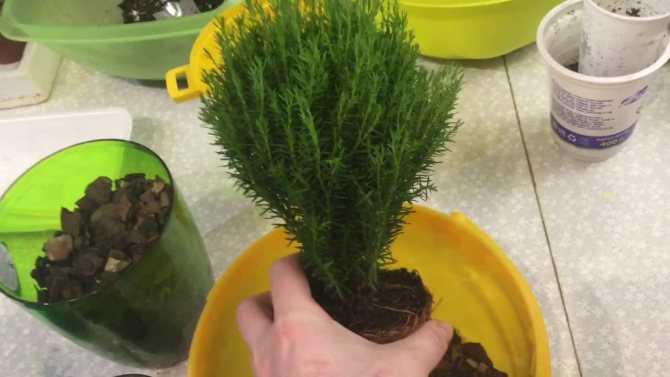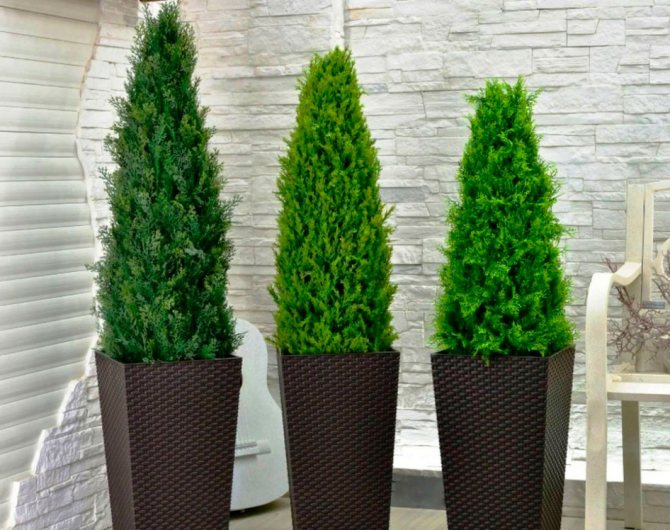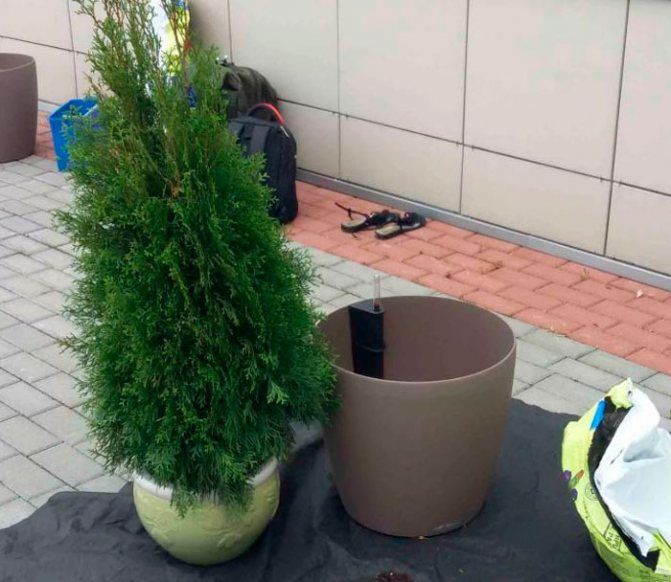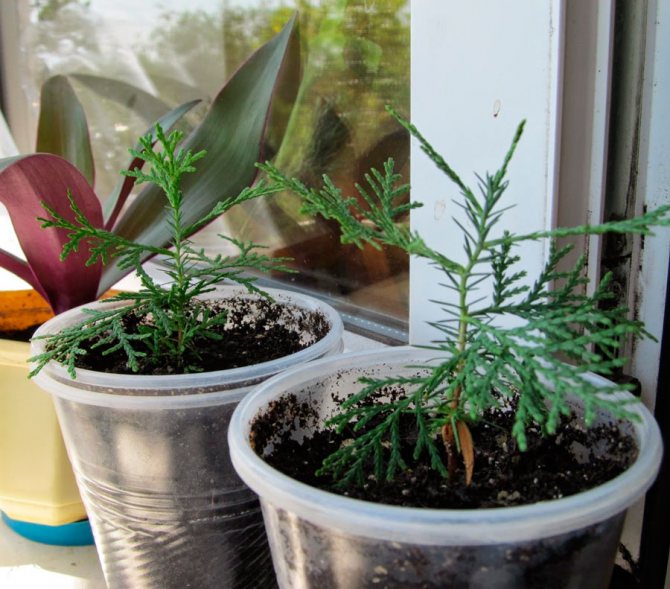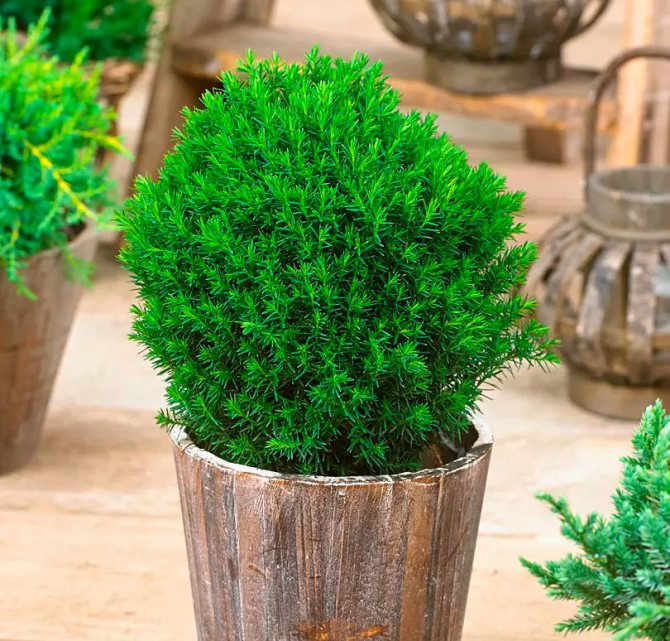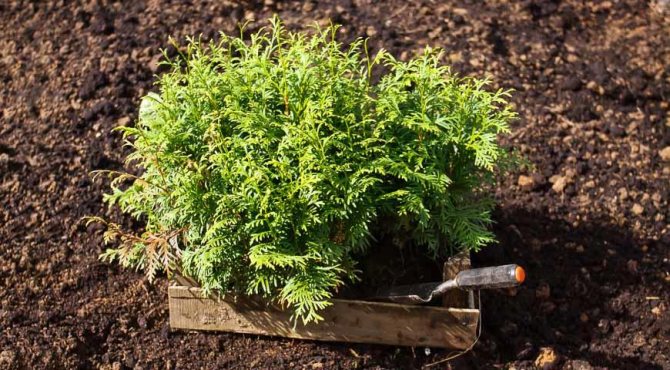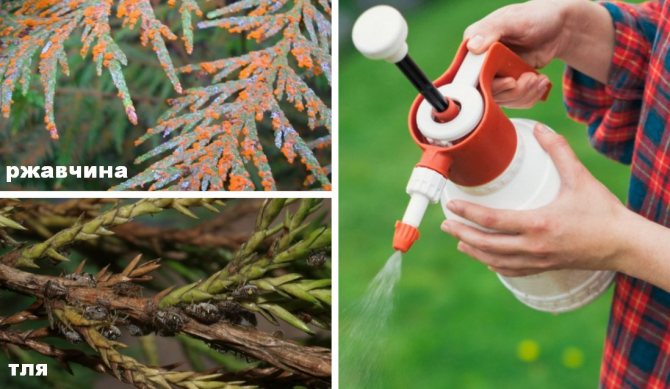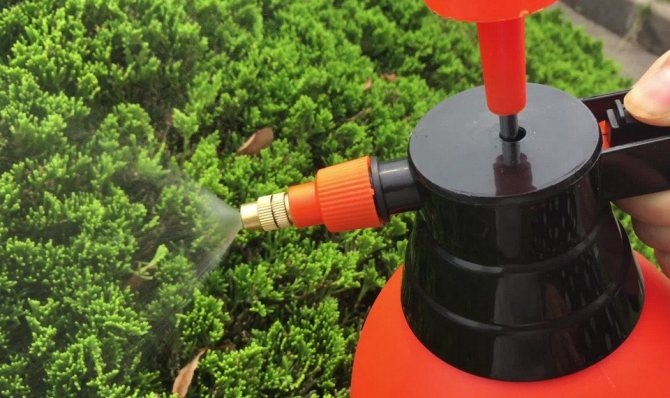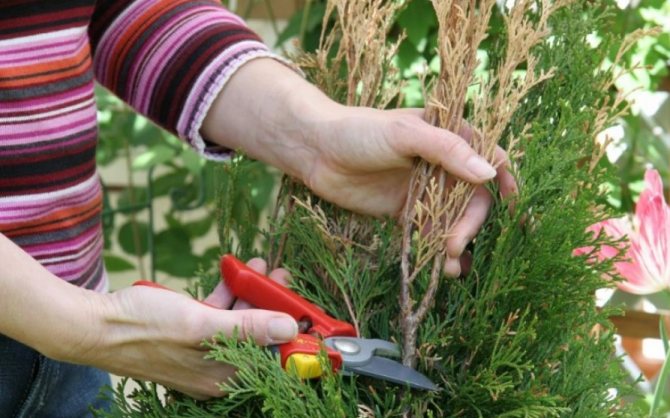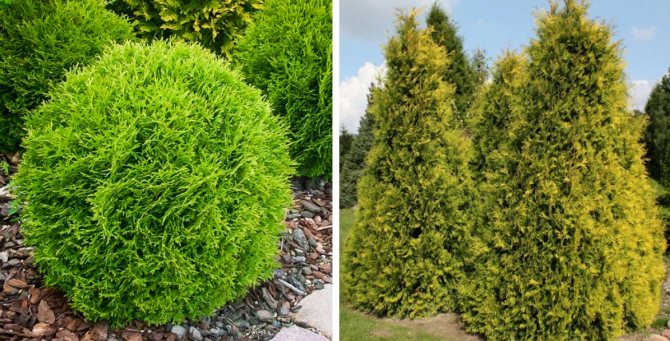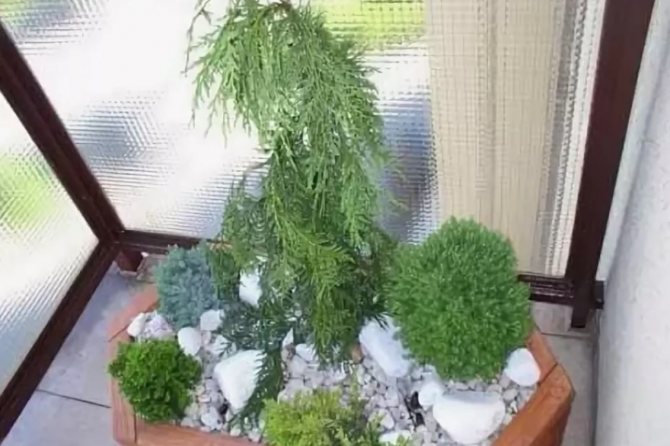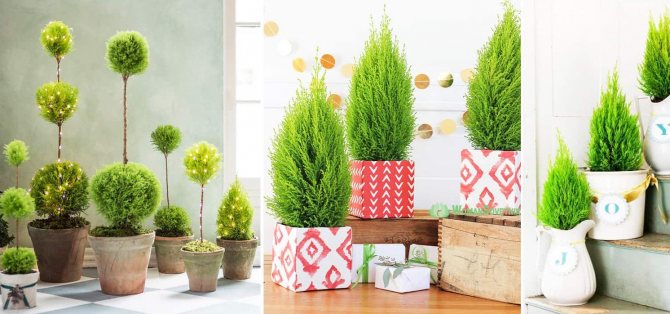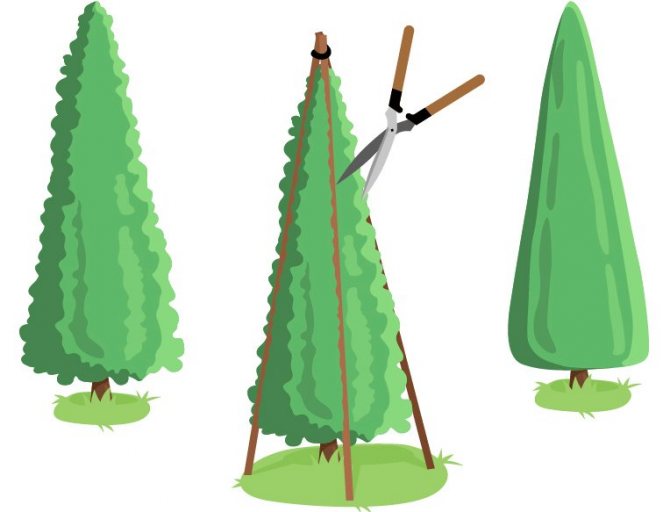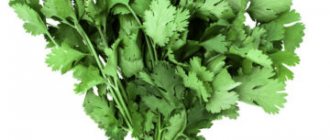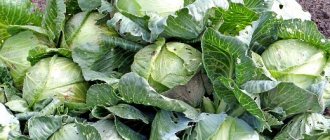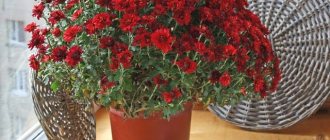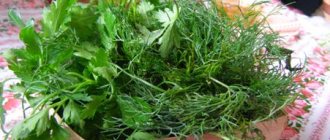This gives the gardener ample opportunity to select the size and growth rate of conifers suitable for any application, from parks to balconies. Conifers of all sizes can be trimmed to form formal pyramids, topiary art or bonsai.
In our climate, almost all such plants are grown as indoor or greenhouse plants, for winter gardens or cool light greenhouses. But for the summer they can be taken outside. They can be placed on a pallet or just some kind of flat surface. Taller conifers, if their center of gravity is not balanced by a heavy container, may tip over from the wind or accidental touch, especially if the compost is allowed to dry out and the pot becomes lighter.
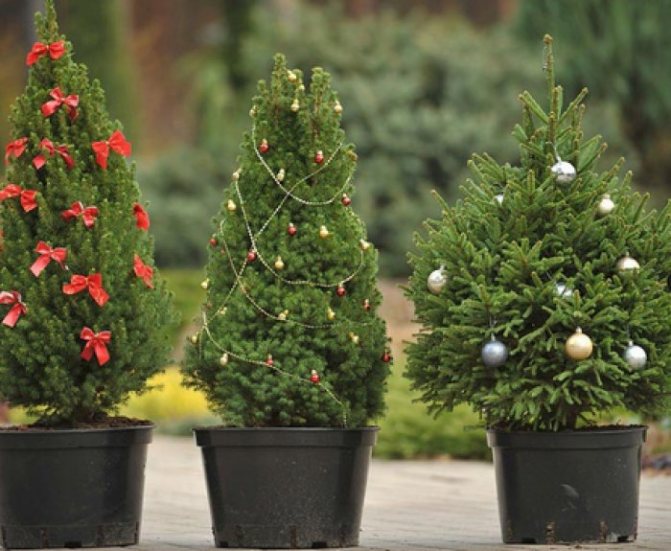
Stones placed on the bottom of the container will act as drainage and also provide additional weight for the plant's stability. Such conifers can be used to decorate loggias and balconies, put them in balcony boxes for the summer. If you have a winter conservatory or greenhouse that keeps temperatures above freezing in winter, you can enjoy experimenting with less resistant or subtropical conifers.
Conifers can remain in one container for several years. They are transplanted as they grow and increase in size, depending on the root system. If the plant does not transplant for a long time, you can give the annual feed with a slowly consumed fertilizer, in early spring or summer. Excess nutrition should be avoided, as should priming. You don't want the plants to grow too fast. And from the overflow of water, the plant may simply die. However, most conifers need simple and sensible care. Sometimes a little pruning and insecticide treatment is needed.
Description and varieties
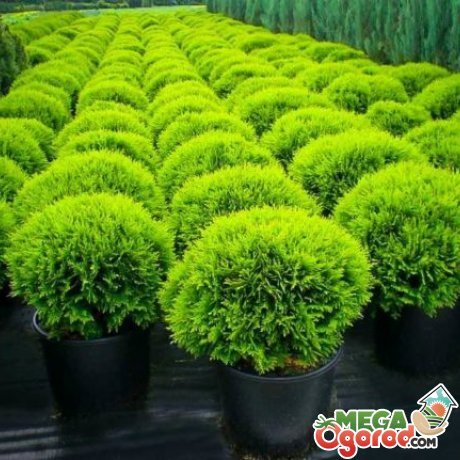

Thuja belongs to the cypress family. Another name is iron tree. Under natural conditions, and this is Japan and North America, it can reach a height of 7 m.
Thuja is an evergreen plant, tree or bush with more than a hundred decorative forms.
Its branches are flat, the leaves are small diamond-shaped needles. They are located opposite and cover the branches with a kind of scales. Leaves resemble shingles in shape and placement. They also stack on top of each other, creating an intricate path. Cones are bent downwards, oblong in shape.
Young shoots are green. With age, they become woody and brown. In place of flower buds, after pollination with anthers, cones are formed. Their size is about 1 cm. They ripen in early autumn. Thuja leaves contain camphor oil. This is the reason for the pleasant smell that comes from the plant.
Thuja has several types:
- Western (tree of life).
- Korean.
- Japanese, or Thuja Standish.
- Folded (giant).
Chinese, or Sichuan.
Nowadays, eastern thuja is increasingly grown as a pot plant. For this, breeders have created many dwarf forms.They are distinguished by the color of the leaves, which can be green, blue, golden or silver. There are also varieties with mixed colors.
Thuja can be grown in pots:
- Danica
- Folded Vipcord
- Folded Cagers Beauty
- Western Golden Globe
- Western teddy
- Western Miki
- Aurea Nana
- Dwarf
- Teeny Tim
- Little Giant
- Miriam
Reproduction of thuja


Thuja can be propagated by seeds, cuttings or branches and layering. But the process of growing thuja from seeds takes up to six years. In addition, maternal properties are not transmitted with this method of reproduction.
The seeds must be fresh. When kept warm, they lose their germination. To get the seeds out of your buds, you need to separate them. The removed seeds are dried, sifted through a coarse sieve. In regions where the snow lasts for a long time, you can tie the seeds in gauze and after the snow falls, bury them in a snowdrift to a depth of 30 cm.If this is not possible, because the snow cover does not last long, they are stratified by placing them in wet sand and placing them on a couple of months in a cellar or refrigerator. You need to check them periodically so that they don't get moldy or dry out.
Ads on NN.RU - Shopping
The body of the cutting unit - the PM hub is maintenance-free (assembled) is used on disc harrows and discators of the BDM series, does not require. Price: 2 750 rub.
Selling wholesale goods after the closure of the sewing shop. Ribbons, buttons, etc. Check by phone and personal inspection of the goods. Same. Price: 1 500 rub.
The MKS-2 mesh calibration machine is designed for the calibration of vegetables into 2 fractions due to a mesh belt with any cells.
Equipment machine for dry cleaning of potatoes and vegetables MSO-16 - designed for cleaning vegetables from soil, black soil.
Renovation is a real challenge for the family. There are hundreds of questions that have no answers, and a lot of problems that are urgently needed.
Read also Mushrooms in the Leningrad region in contact
Three hours ago, at the Pokhvalinsky Congress, two foreign cars collided under the Kremlin. We publish the details.
We have already written many times that not all hospitals in the Nizhny Novgorod region can boast of a good repair. But the state of the chambers.
Planting and replanting
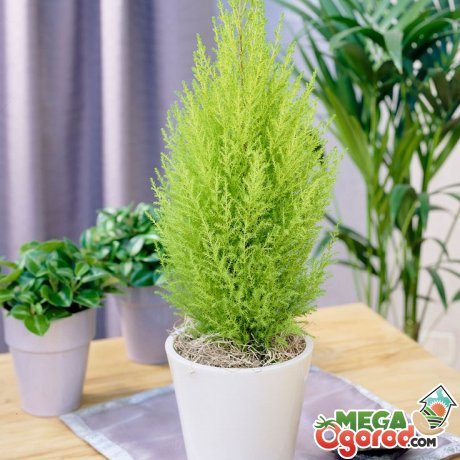

The soil for growing young thuja should be loose, it is good to let moisture and air pass to the roots of the plant. You can buy it for growing thuja at a flower shop by choosing a composition for conifers. You can cook it yourself. Mix 2 parts of coniferous, 4 parts of leafy earth. Add half a portion of the sand.
Containers or pots for dwarf thuja can have a volume of 20-30 liters. For larger plants, you need dishes for 100-150 liters. In this case, the plants can be left outside for the winter. A pot for planting a thuja is taken 3 times more than a clod of earth with roots. A drainage layer is placed on the bottom of the pot. It will prevent moisture from stagnating near the root system of the plant. You can make it from pieces of foam or cut corks. You can add gravel, but this will significantly affect the weight of the pot.
Set the thuja so that the root collar is at the level of the topsoil. Watering. Install in a fairly bright place, but away from direct sunlight. Even northern windows can be used, but the amount of light should be sufficient. Otherwise, the crown will become sparse and ugly.
The first years of life are transplanted every year, while increasing the diameter of the pot by several centimeters.
The soil for the older thuja is not needed the same as for young plants. Mix 3 parts of peat and one part of sand and leafy earth. The tree is installed so that the ground level remains the same as before transplanting. If you deepen the root collar further, the root can rot. The root system of the thuja is at the top of the soil.Therefore, it is impossible to loosen it strongly, so as not to damage the roots.
We multiply
At home, thuja is propagated using:
- Cherenkov.
- Seed.
Breeding seeds are not used as often. Unfortunately, there is no guarantee that the seedlings will be successful. Propagating by seeds is painstaking work and a long journey.
Step-by-step instructions for seed propagation:
- In an adult and healthy plant, the cones are carefully cut off.
- Put them in a warm (and cold) place.
- After a while, the cones will open and the seeds can be removed.
- The seeds are wrapped in a cloth, which is pre-moistened with water. They are in this state for 24 hours. The fabric should be dampened as it dries.
- Take a small pot, fill it with soil, and water it. Then the seed is placed.
- It is not necessary to deepen the seeds, it is enough to sprinkle it with earth and cover with wet sawdust.
- The first shoots can be observed in 1-1.5 months.
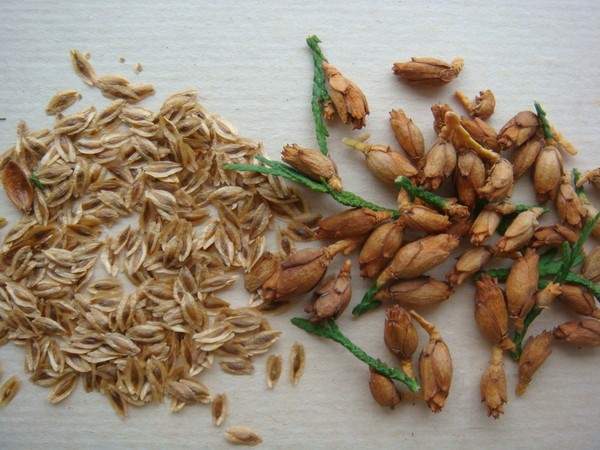

When growing thuja with seeds, the characteristics of the variety (for example, the color of the needles) may be lost.
Seeds that are ripe in the fall can be germinated by spring. For this, stratification is carried out. That is, the seeds are mixed with moistened sand and for about 90 days they should be kept in a room with a low temperature (3-5 degrees). Alternatively, put the seed box in the refrigerator or take it out to an unglazed balcony. After that, the seeds are sown into the soil, while the temperature should be about 20-23 degrees. After 2 months, sprouts will appear.
When the seeds have sprouted, favorable conditions and proper care for growth should be created:
- Moderate soil moisture.
- Diffused lighting.
The grown seedlings can be transplanted into a pot to a permanent place, they do it very carefully so as not to damage the delicate root system. Thuja will be fully formed in 3 years, or even 5 years.
Thuja is easier to propagate by cuttings than by seeds. Step-by-step instructions for propagation by cuttings:
- A stalk is carefully separated from an adult thuja. This is done with a sharp knife or pruning shears.
- The optimal cutting size is 10-12 centimeters.
- The resulting cutting is deepened by 2-3 centimeters into the soil.
- The pot of cuttings should be kept in a warm house (apartment).
- Frequent ventilation is required.
- The shoot does not need watering; it can be replaced by spraying.
- When roots appear, the plant can be taken outside and transplanted.
So that rooting occurs faster, the sections are recommended to be treated with a means to accelerate growth.
Interesting to know! Some growers recommend not cutting, but tearing off the stalk. Pieces of mature wood come off, which in the future contributes to rapid rooting.
Thuja care
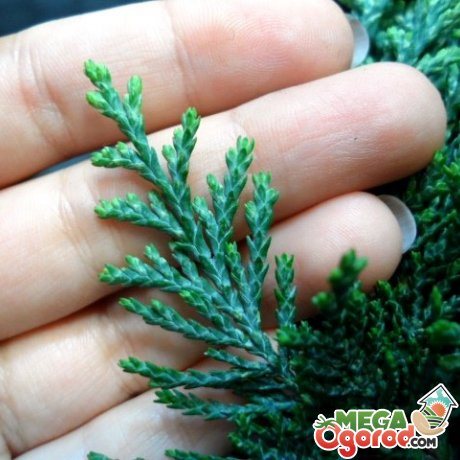

How to properly care for a plant:
- In summer, thuja care consists in regular watering. It must be protected from direct sunlight. Feels good in the garden, in the light shade of trees. Poorly tolerates heat and draft.
- In winter, you need to organize a temperature regime for thuja from 5 to 15 ° C. If left in a room with high temperature and low humidity, young shoots can dry out. You can not install a pot of thuja near heating radiators or stoves.
- You need to water less often in winter, making sure that the lump of earth in the pot does not dry out. Excess moisture with frequent watering can provoke root rot.
- Thuja in containers of sufficient volume can be left in the garden for the winter. In the first year, even before the onset of frost, they are wrapped in non-woven material. A thick board is laid under the bottom. After the snow falls, make sure that its layer on the soil in the container is not less than 20 cm. The next wintering should pass without complications. If, of course, there is snow outside and the frost does not drop below 20 degrees. Therefore, it is still better to take care of the shelter with foam rubber or other insulation.
- Thuja reacts well to spraying with water at room temperature.This is especially necessary in winter, if there is no way to ensure a drop in temperature. For thuja, spraying is preferable to watering.
- Thuja is fed once a month in the spring and summer. Fertilizer for conifers is heavily diluted so as not to cause accelerated growth of thuja.
- Thuja lends itself well to crown formation. Use pruning or pinching of branches. In this way, you can form a plant with the desired crown shape. It can be a ball, a cone, a pyramid. You can create a plant with or without a stem.
Diseases and pests
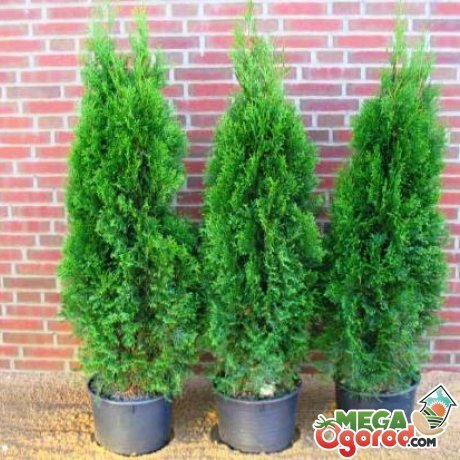

Young thuja branches can be damaged by omnivorous aphids. It settles at the ends of young shoots with the help of ants, which transfer it to the bush. Breeding, it sucks juice from young shoots. As a result, they stop growing and dry up. The tree loses its decorative effect, it may even die. You need to fight aphids by treating the plant with insecticides according to the scheme specified in the instructions for the drug.
As a result of excessive watering, the roots or trunk can rot.
Needle-gnawing leaf rollers and speckled moths, root and stem scale insects, and thuja bast beetle can damage the leaves of thuja. They are processed with Fufanon.
There are few diseases of thuja. They are mainly of fungal origin, for example. Brown mold. You need to fight them by spraying with fungicides after 10-14 days. It can be a preparation for indoor plants Foley, Karbofos, an organic fungicide Fitosporin.
Using thuja


Thuja pleases with its appearance all year round. After all, she does not shed leaves. It can be used as a substitute for a Christmas tree by decorating with toys and a serpentine. Phytoncides, which secrete thuja leaves, purify the air, destroying pathogens. In addition, it emits a pleasant aroma. It has a positive effect on the nervous system of others.
Thuja needles are used to make preparations that stimulate the nervous and cardiovascular system.
Thuja juice has an antiseptic and hemostatic effect. Thuja-based preparations help in the treatment of colds due to diaphoretic and expectorant effects. A decoction of thuja branches is used to strengthen hair. However, in large quantities, thuja essential oils are poisonous. Therefore, they should not be used by pregnant women with epilepsy.
In summer, thuja pots can be used to decorate the yard by placing them in shaded areas. In winter, they are taken to the house, where they look great against the background of flowers and deciduous plants. They will feel even better on insulated loggias or in a winter garden.
More information can be found in the video:
Because You are not logged in. To come in.
Because the topic is archived.
Junipers
And how many junipers are sold on New Year's days. The most cold-resistant species in spring can be planted in open ground in a sunny or slightly shaded place. Chinese juniper with small pressed green, gray-green or golden needles is quite frost-resistant. This amazing plant can also live in the house. The Chinese juniper winters wonderfully in a cool room at + 10 ° C. It quickly adapts to a variety of living conditions and grows well in winter even at + 18 ° C. The plant needs frequent spraying, especially in winter. Juniperus Chinese is an ideal plant for beginners looking to master the art of making bonsai. He quickly grows lateral shoots, which allows not only to change the shape, but also to correct mistakes made earlier.

